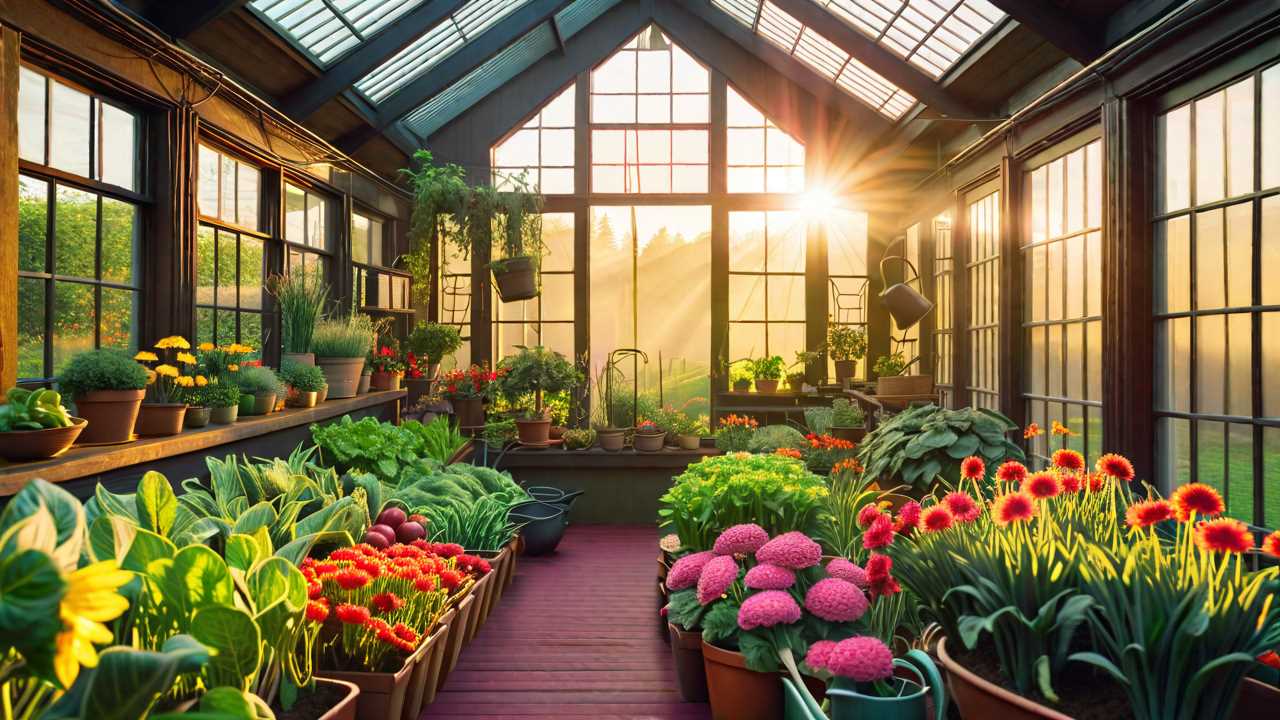
Enhancing your gardening experience with a backyard greenhouse opens up possibilities beyond traditional outdoor planting. The advantages go beyond just protecting your plants; they provide a conducive environment for growth and sustainability. Imagine the satisfaction of enjoying fresh produce straight from your backyard, all year round. But there's more to it than meets the eye; the benefits of having a greenhouse extend far beyond the surface. Curious to uncover the full potential of this garden sanctuary?
Extended Growing Season
By having a backyard greenhouse, you can significantly prolong your growing season, enabling you to cultivate plants beyond their usual timeframe. By offering a controlled environment, greenhouses shield plants from harsh weather conditions such as frost, excessive heat, or heavy rains. This allows you to begin planting earlier in the spring and continue harvesting well into the fall, even as temperatures drop outside. The consistent conditions inside a greenhouse also foster faster growth rates and healthier plants, resulting in higher yields and better quality produce.
Moreover, a greenhouse allows you to grow a wider variety of plants that may not typically thrive in your region's climate. You can experiment with exotic flowers, tropical fruits, or delicate herbs that require specific temperature and humidity levels. This opens up a world of possibilities for your garden, enabling you to diversify your harvest and enhance your outdoor space with unique flora.
Essentially, the extended growing season provided by a backyard greenhouse empowers you to nurture a thriving garden year-round.
Climate Control
Maintaining ideal temperature and humidity levels is essential within a backyard greenhouse to guarantee the healthy growth of plants throughout the year. Climate control in your greenhouse allows you to create a tailored environment that mimics the natural conditions required for superior plant growth. By regulating the temperature, you can extend your growing season, start seeds earlier in the spring, and protect delicate plants from harsh weather conditions. Installing a ventilation system, heaters, fans, and even misting systems can help you control the temperature and humidity levels effectively.
During the colder months, a greenhouse can provide a warm haven for your plants, shielding them from frost and cold winds. In the summer, proper shading, ventilation, and cooling systems prevent overheating and sun damage. Monitoring tools such as thermometers and hygrometers are essential to make sure that your plants thrive in the ideal climate conditions.
Pest and Disease Management
To effectively manage pests and diseases in your backyard greenhouse, implementing proactive strategies is essential for safeguarding the health and vitality of your plants. Here are three key practices to help you effectively control pests and diseases:
- Regular Inspections: Conduct frequent inspections of your plants to detect any signs of pests or diseases early on. Look for discoloration, holes in leaves, webbing, or any other unusual symptoms. Early detection allows for prompt treatment and prevents the spread of issues.
- Biological Controls: Introduce beneficial insects like ladybugs or predatory mites that feed on common greenhouse pests. This natural method can help keep pest populations in check without the need for chemical pesticides, promoting a healthier environment for your plants.
- Quarantine Procedures: When introducing new plants to your greenhouse, quarantine them for a period to observe for any signs of pests or diseases. This helps prevent the spread of infestations to your existing plants and allows you to address any issues before they become widespread.
Increased Crop Yield
Inspecting and maintaining ideal growing conditions in your backyard greenhouse can contribute significantly to increasing the crop yield of your plants. By controlling factors such as temperature, humidity, and light exposure, you create an excellent environment for plant growth, leading to higher productivity.
Greenhouses offer protection from harsh weather conditions, pests, and diseases, ensuring your crops thrive and produce abundantly.
Furthermore, the controlled environment of a greenhouse allows you to extend the growing season, enabling you to cultivate crops that wouldn't typically survive in your region's climate. This extended growing period means more harvests throughout the year, maximizing your overall crop yield.
Additionally, the ability to regulate water and nutrient levels precisely in a greenhouse helps plants reach their full potential, resulting in healthier and more bountiful yields.
Frequently Asked Questions
Can a Backyard Greenhouse Be Used for Non-Edible Plants?
Yes, a backyard greenhouse can be used for non-edible plants. It provides a controlled environment for various plants like flowers, succulents, and tropical species. With proper care and maintenance, your greenhouse can nurture a diverse botanical collection.
How Much Maintenance Does a Greenhouse Require?
Maintaining a greenhouse involves daily tasks like watering, monitoring temperature, and controlling pests. Regular upkeep such as cleaning, pruning, and adjusting ventilation is essential. Consistent care guarantees healthy plants and ideal growth.
Are There Any Restrictions on Greenhouse Size in Residential Areas?
You might think there are size restrictions, but many residential areas allow backyard greenhouses. Regulations vary, so check with local authorities. Consider factors like setbacks and structure height to comply with guidelines.
Can a Greenhouse Be Used for Seed Starting?
Sure, a greenhouse is perfect for seed starting. It provides a controlled environment with ideal temperature and humidity levels. You can start your seeds earlier in the season and guarantee they grow strong before transplanting them outdoors.
Do Greenhouses Require a Building Permit?
Just like a ship needing a captain, greenhouses often require a building permit for installation. Guarantee compliance with local regulations before starting on your greenhouse journey to avoid stormy seas of fines and setbacks.
 SportsHollywoodLifestyleFashionHome & GardenTrendsPrivacy PolicyTerms And Conditions
SportsHollywoodLifestyleFashionHome & GardenTrendsPrivacy PolicyTerms And Conditions
